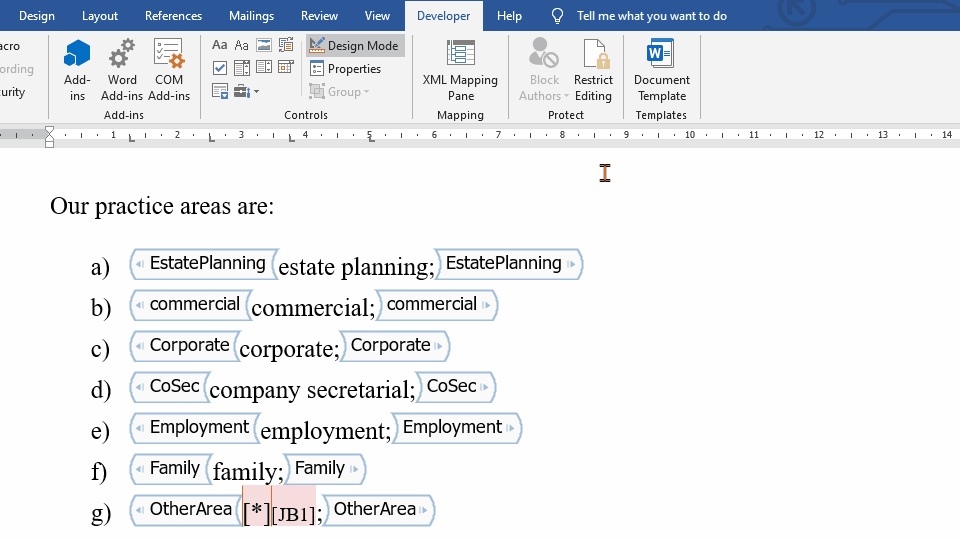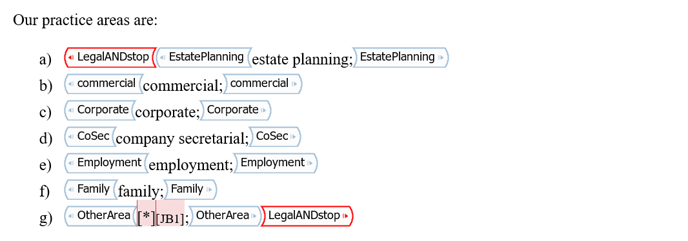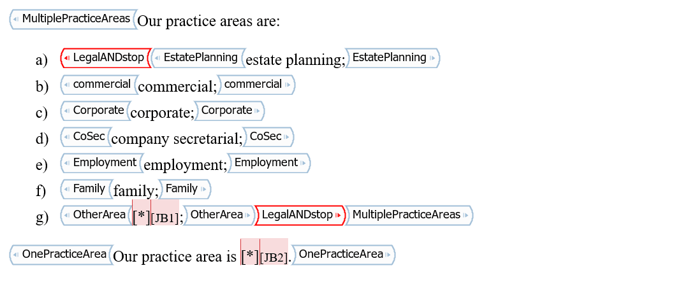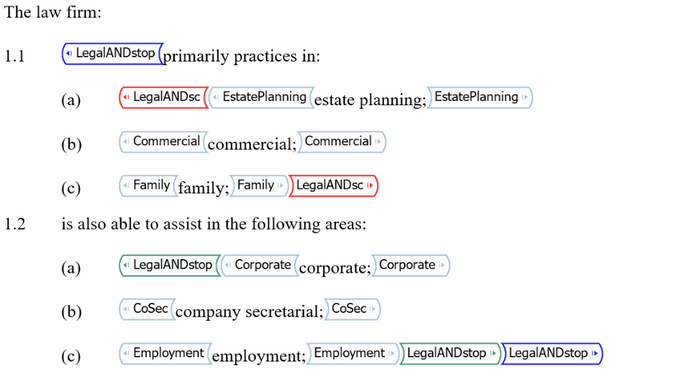Legal formatting controls are a pivotal feature of template construction in the Rulestar system. Designed to format a list of enumerated (or bulleted) paragraphs, legal formatting controls should be used when a list of paragraphs are conditional content such that it is unknown which paragraph will be the second last and the last in the final document.
If you would prefer to create a list within a sentence, please see inline formatting controls.
Types of Legal Formatting Controls
There are 9 legal formatting controls defined within Rulestar:
- LegalANDstop;
- LegalORstop;
- LegalANDORstop;
- LegalANDcomma;
- LegalORcomma;
- LegalANDORcomma;
- LegalANDsc;
- LegalORsc; and
- LegalANDORsc
There are two considerations when choosing the legal formatting control for your situation.
1. Should the final paragraph be preceded by "and", "or" or "and/or"?
- If the final paragraph should be preceded by "and", you should use an "AND" legal formatting control (listed 1, 3 and 5).
- If the final paragraph should be preceded by "or", you should use an "OR" legal formatting control (listed 2, 4 and 6).
2. Should the last paragraph end with a full stop, comma or semi-colon?
- If the final paragraph should end with a full stop, you should use a "stop" legal formatting control (listed 1 and 2).
- If the final paragraph should end with a comma, you should use a "comma" legal formatting control (listed 3 and 4).
- If the final paragraph should end with a semi-colon, you should use an "sc" legal formatting control (listed 5 and 6).
Formatting Paragraphs Within The Template
Paragraphs inside legal formatting control must be separated by semicolons. This includes the last paragraph. You do not need to add an "and" or "or" in your paragraphs.
Placing Legal Formatting Tags
Legal formatting controls should be placed around all paragraphs that make up the list (see below). Inserting the legal formatting control is simple and follows the same process as marking a range of conditional content, using the name of the desired legal formatting control as the title of the rich text content control. Unlike condition content, legal formatting controls do not require a corresponding named range in the builder.
Minimum of Two Elements
As a list cannot contain less than two paragraphs, legal formatting controls are designed to correctly format a list with two or more elements. If it is possible that only one paragraph may end up in a list due to every other paragraph being conditionally removed, it is advised to create two versions of the content, one that will form a list and the other that will remain inline. In the example below, if only one practice area is selected, the list (including the lead-in sentence) will be removed, and the second version of the content will remain.
Nesting Legal Formatting Controls
Legal formatting control can be nested to create lists within lists. Each list requires its own legal formatting control, although all lists can use the same type of control. Legal formatting controls are evaluated from the most nested list outwards to the least nested. This means that the punctuation (full stop, comma or semi-colon) that remains at the end of the last element of each list will be that applied by the most outward legal formatting control on that paragraph. In the example below, the full stop applied by the blue LegalANDstop will remain.





